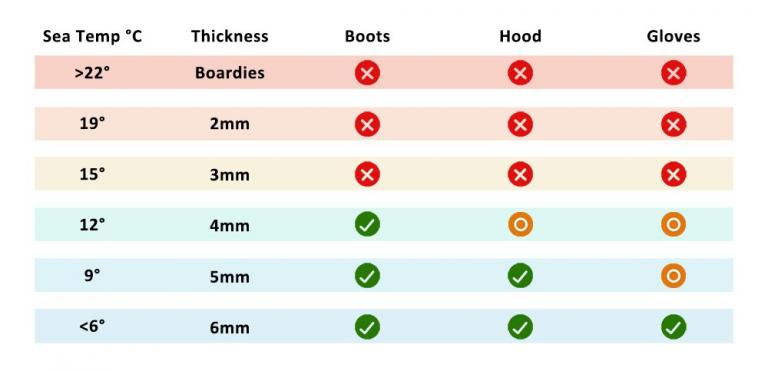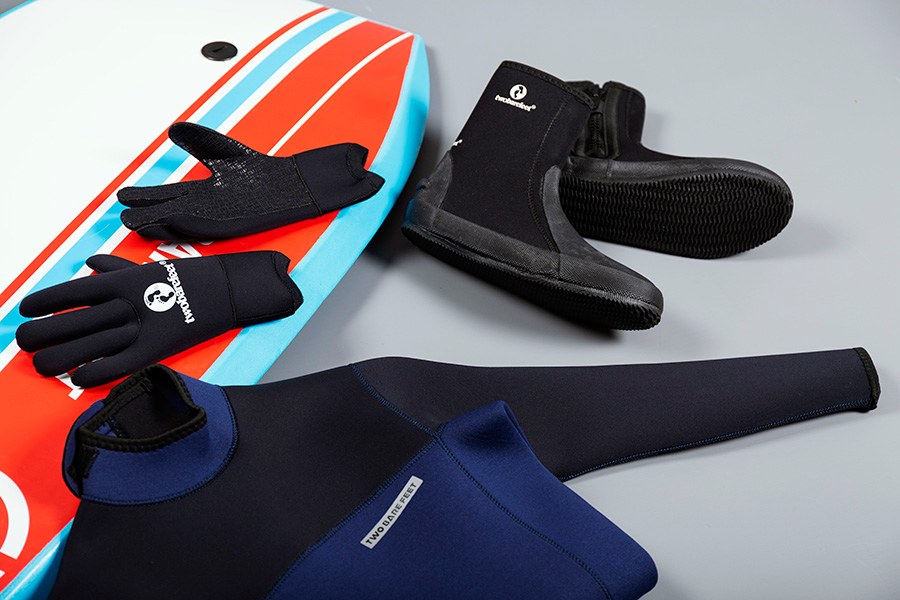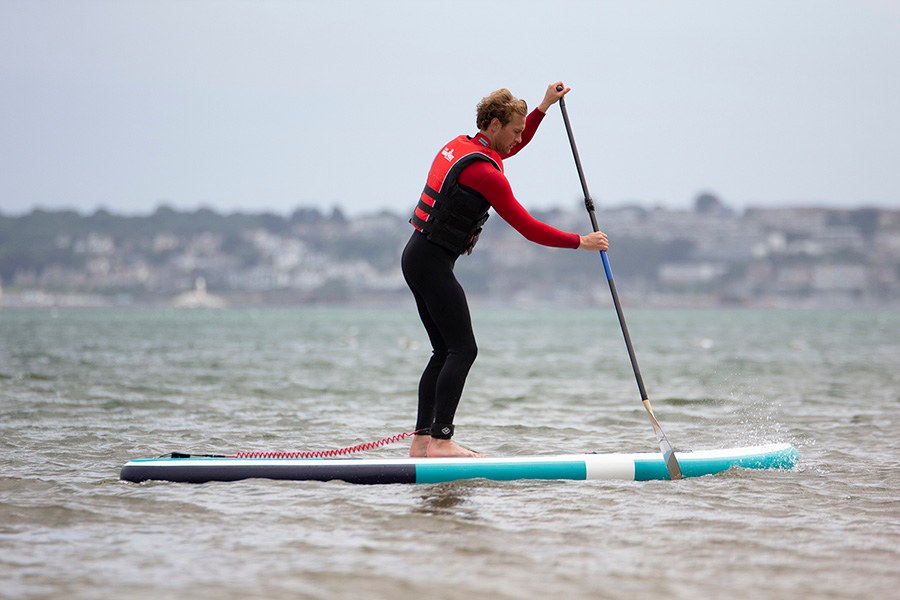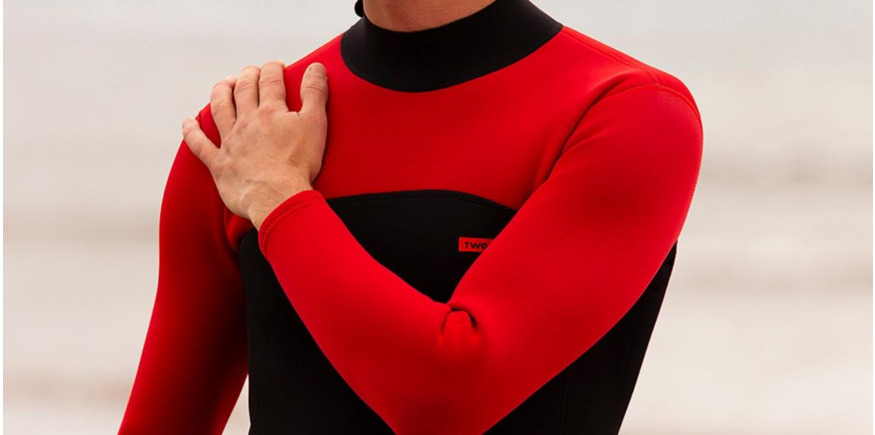Although all wetsuits are designed to keep you insulated, not all wetsuits have the same thickness. When buying a new suit, it’s essential to consider what time of year you’ll be venturing into the water. Different-thickness wetsuits are designed to keep you warm and comfortable while the water temperature fluctuates throughout the year. Buy the wrong one and your paddle, surf or swim could be cut short pretty quickly due to cold.
For example, most people would struggle to last in the winter ocean for any length of time in a 3mm wetsuit without any accessories such as boots and a hood. At the other end of the scale, a 5mm suit during the summer months will have you sweating while unnecessarily restricting your movements thanks to the overly thick neoprene.
To help you choose the ideal wetsuit thickness, we’ve created the chart below to guide your decision making. Here in the UK, our summer sea temperatures reach highs of around 15-20°C while winter can be as low as 6°C. However, keep in mind that this chart was designed for average seasonal conditions and there are many other factors to consider.

How to choose wetsuit thickness
Even though the sea temperature will stay relatively steady within the season, different days and conditions outside of the water can play a big part in staying warm. Wind chill for example, can quickly drop your core temperature and you might find that a wetsuit thickness of 4mm isn’t sufficient to keep the cold out even during spring or autumn. Wearing a rash vest under your wetsuit will help keep your core temperature up on those unexpected cold days.
In comparison, on especially sunny days later in spring or during autumn months, you might find yourself burning up in that same 4mm suit. One thing to keep in mind is that it’s much easier to cool down than it is to warm up – just let a little more water into your wetsuit through the neck.
Some people are much more used to colder conditions than others – be realistic about your ability to handle the cold. If you’re someone who really struggles with the cold, you could easily choose a suit that is thicker than that suggested on the chart. You could also begin wearing boots, a hood and gloves earlier than we recommend.
One final thing to consider if you are planning on being in the water all year round is budget. In an ideal world, you’d have a different wetsuit for all conditions, but we are aware this isn’t always realistic.

Wetsuit temperature guide: for the unlimited budget
If your pockets are lined with watersports in mind, we’d recommend a combination of three different wetsuits to give you options and ensure you are completely comfortable all year round.
A summer option would be a 2mm or 3mm full length or shorty wetsuit. Keeping UK conditions in mind, one of these could see you through June, July, August and into September without a problem. At Two Bare Feet we have the ideal compromise with our Thunderclap range of wetsuits which are available in many styles and thickness options including a 2.5mm thickness.
We also offer the option of wetsuit jacket and short sets which won’t keep you quite as warm as an all in one suit but do provide more flexibility and make great options for paddleboarding.
Our 4mm Thunderclap wetsuit is ideal for early spring and late autumn. And a 5mm suit is thick enough for the deepest of winter sessions anyone is likely to face in this part of the world.
Whilst buying separate wetsuits for each season is the most expensive approach, it’s worth bearing in mind that a suit’s life expectancy is based mostly on how much you use it. Splitting your time between the three wetsuits means each suit will last longer and hold its ability to keep out the cold effectively, providing you clean and store them properly.

Medium budget – buying two wetsuits for all year-round use
If you still have a bit of budget, we’d recommend a combination of two wetsuits to keep you comfortable all year. Pick up an option for each end of the temperature scale such as a 3mm and 5mm and you’ll still be sufficiently prepared. This way you can use the 5mm wetsuit for most of the year round and as you begin to feel the heat, switch to the summer option and enjoy the added flexibility.
Low budget – one wetsuit for the year
If your budget only caters for one suit, we’d go for a 4mm wetsuit thickness. This bridges the gap between summer and winter season and can be paired with underlayers such as our thermal rash vest for extra warmth in the water. And as previously mentioned, if you’re too hot in the winter, just let a little water in and you’ll cool in no time.
Wetsuit temperature guide: summer only suits
If you’re only interested in summer sunshine and clear blue waters for surfing, stand up paddling, swimming and bodyboarding then your choices are made a lot simpler.
You’ll be looking at something in the 2mm and 3mm thickness range and we’d recommend going for our Thunderclap 2.5mm wetsuit. We’ve designed these specifically for summer use and they come in a variety of styles including full suit, shorty, sleeveless and more in men’s, women’s and kid’s wetsuit options.




